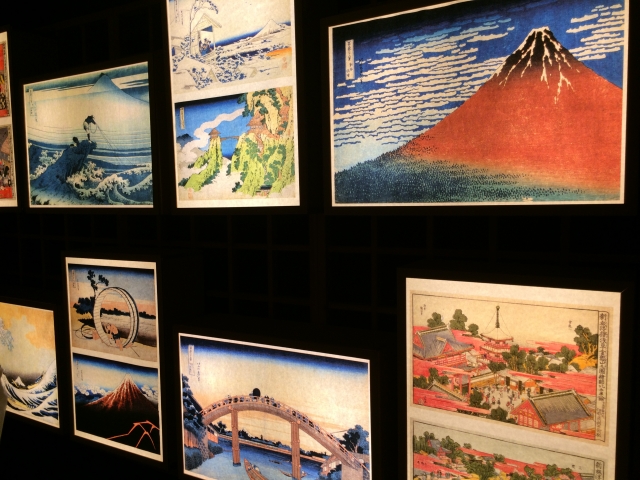Contents
“Ukiyo-e” that influenced European painting in the late 19th century
Ukiyo-e is a painting of the Japanese woodblock print, Kam-e, which was born and popularized in Japan and abroad, in the mid-16th and 19th centuries (the Edo period). The main themes are people’s lives, social scenes, and popular actors and sumo wrestlers.
After the mid-16th century, it was able to mass-produce through woodblocks, and it feels like today’s magazines, anyone can buy and appreciate.
After the mid-19th century, it was dominated by French paintings and influenced by ukiyo-e in Europe. The unique artistic style called “Japaneseism” set off a wave of enthusiasm, Monet, Van Gogh, Rotrek, Renoir, Doujia Waiting for the painter to leave a famous painting influenced by ukiyo-e.
Katsushika Hokusai is the charm of the designer
Katsushika Hokusai (1760 – 1849) was one of the most famous ukiyo-e painters. It is said that the number of works of Hokusai is more than 30,000. When telling the style of painting, I especially hope that your attention is high in design. For example, his representative continuous work, the print “Fuyue 36 Scenes”, looks at Mt. Fuji from the famous places of Japan, but when it comes to the local area, it may not be able to see Mount Fuji as a work.
Because Bei Zhai will store the things you have seen in memory first, then decompose the images and reproduce them in the picture. For example, in the “Fuyue 36 Scenes” series, “Wuzhou is not the same as the original”, the small triangle of Mount Fuji is placed in a large drum, which is a geometric figure.
Now it seems that it still feels like modern art. New ideas. However, from the area depicted in this painting (now Nagoya City, Aichi Prefecture), Mount Fuji is not visible. This is the “creation” of Bei Zhai, and it is also “design.”
In addition to prints, the Sumida Hokusai Art Museum also features the “Haizumi Manga”, which is known as the origin of comics, and the design of a pattern on the fabric of the kimono, depicting a hundred and dozens of paper-shaped “new-shaped small lines” as a model.
Account, etc. Be sure to immerse yourself in the elegant and playful Beizhai World in the birthplace of Hokusai.
Address and official website
Opening hours
9:30 am – 5:30 pm (Entrance gate closes 30 minutes before the closing time)
Closed days Mondays (on the following day if it falls on a national holiday or a compensatory holiday), year-end holidays (Dec. 29, 2016 – January 1, 2017) The museum may close on a temporary basis besides the dates above.
〒130-0014 2-7-2 Kamezawa, Sumida-ku, Tokyo
Map
Admission fee
Permanent exhibits
1. Adults: 400 yen (Group fee: 320 yen)
2. High school, university, and vocational school students and seniors (age 65 and above): 300 yen (Group Fee: 240 yen/person) *Students must present their student ID. Seniors must present a document that proves their age (e.g.: health insurance card or driver’s license).
Please buy admission tickets at the ticket booth on the ground floor. If you plan to visit as a group (excludes school groups), please check the “For groups” section. If you plan to bring a group of students, please check the “For school teachers” section.
Admission is free
for: Pre-schoolers, elementary school and middle school students Students and teachers at high schools in Sumida Ward visiting as a part of their educational program (please contact us beforehand. Admission fees apply to students and teachers at high school outside of Sumida Ward.)
Those with physical disability certificate, mental disability certificate (Ai no techo), rehabilitation certificate, health and welfare certificate for persons with mental disorders, or atomic-bomb victims certificate and their attendants (up to one attendant per person with the above certificate.
Please present the handbook at the entrance.)
In the case that guardians of elementally and middle school students and nursery school children visit as a means of education or nursing (please contact us beforehand.)

